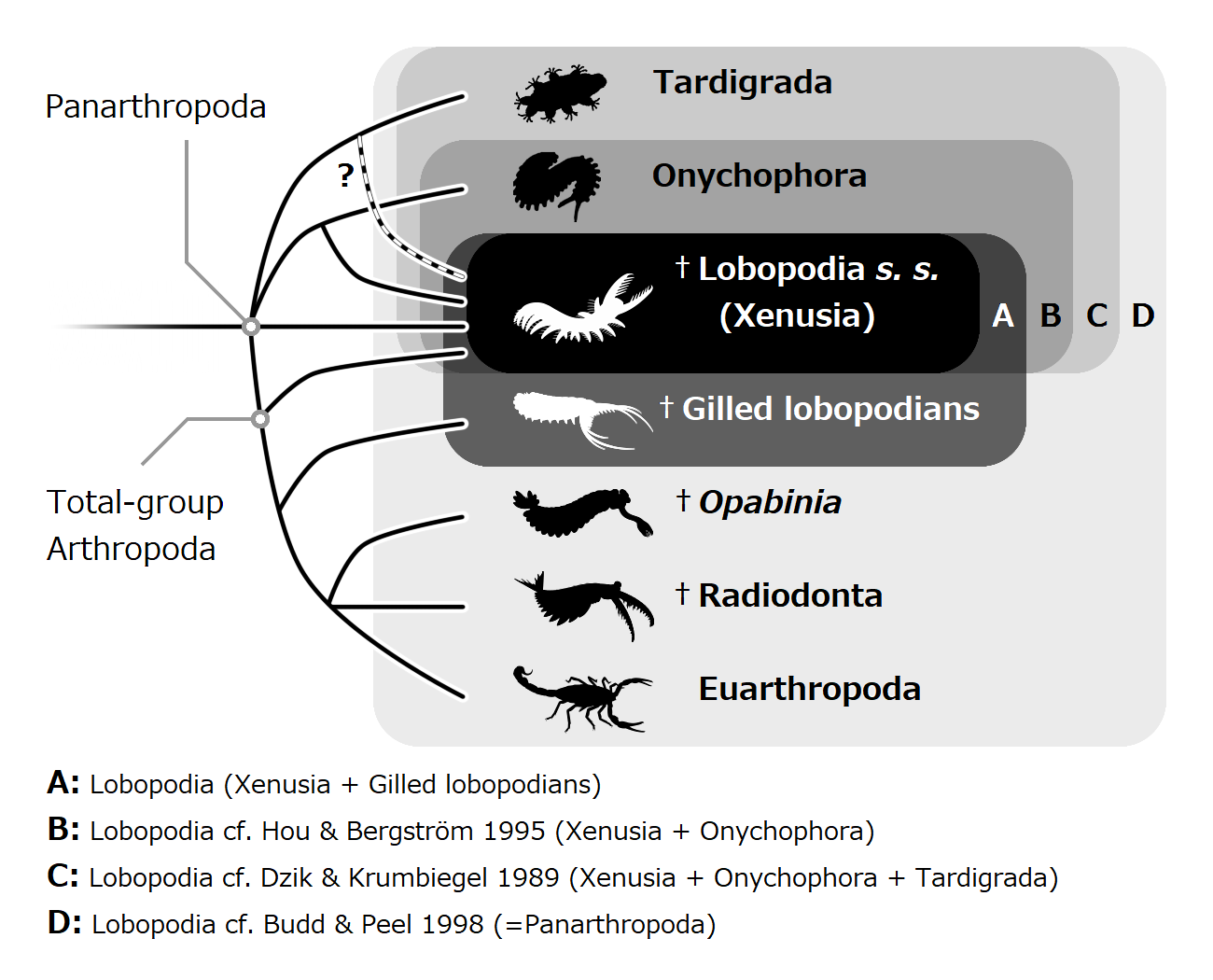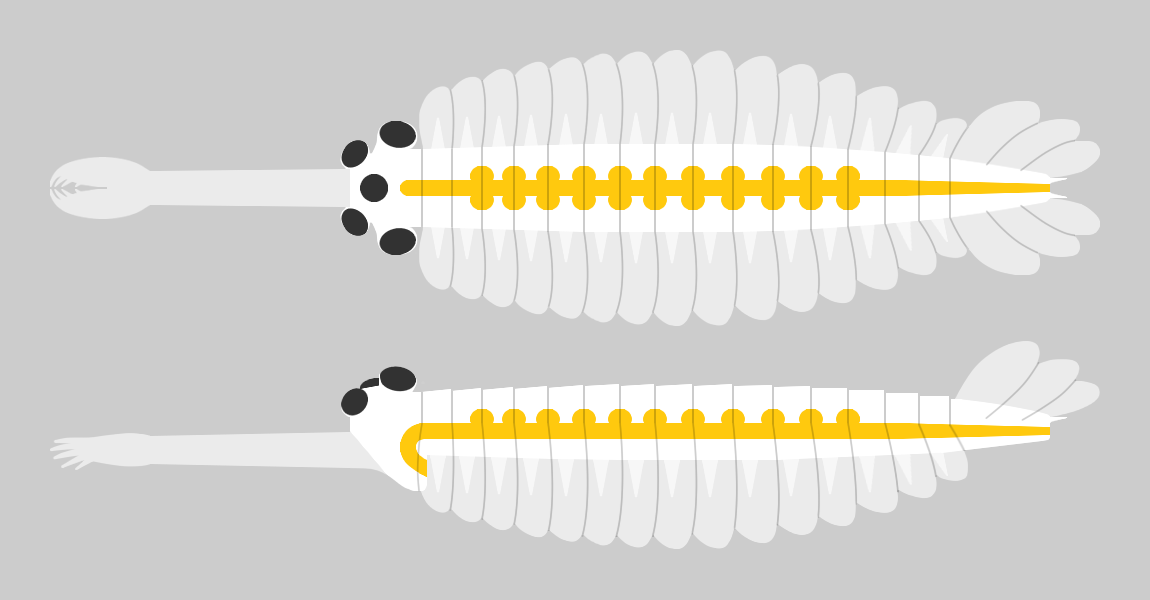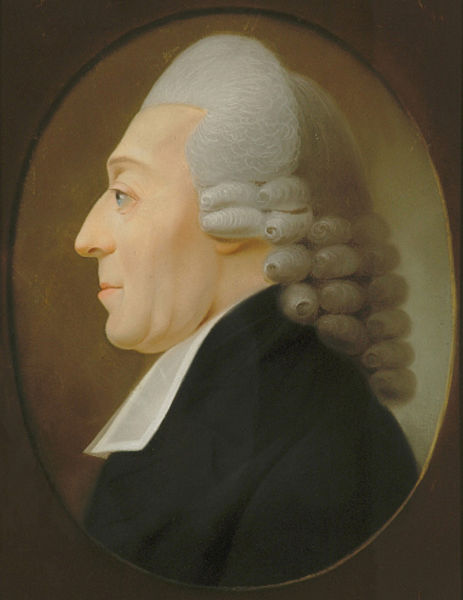|
Pambdelurion Whittingtoni
''Pambdelurion'' is an extinct genus of panarthropod from the Cambrian aged Sirius Passet site in northern Greenland. Like the morphologically similar ''Kerygmachela'' from the same locality, ''Pambdelurion'' is thought to be closely related to arthropods, combining characteristics of " lobopodians" with those of primitive arthropods. Description ''Pambdelurion'' was large for a Cambrian animal, and is estimated to have reached a length of . ''Omnidens'', an organism from China that closely resembles ''Pambdelurion'' and may even be synonymous with it, reached even larger sizes, estimated to be based on the proportions of ''Pambdelurion''. The head of ''Pambdelurion'' bore a large pair of frontal appendages, homologous to the antennae of onychophorans and frontal appendages of radiodonts. These frontal appendages were weakly muscled and relatively soft, suggesting they may have served primarily as sensory organs, rather than for grasping prey. Between the appendages are a pair ... [...More Info...] [...Related Items...] OR: [Wikipedia] [Google] [Baidu] |
Lobopodia
The lobopodians, members of the informal group Lobopodia (from the Greek language, Greek, meaning "blunt feet"), or the formally erected phylum Lobopoda Cavalier-Smith (1998), are panarthropods with stubby legs called lobopods, a term which may also be used as a common name of this group as well. While the definition of lobopodians may differ between literatures, it usually refers to a group of soft-bodied, worm-like fossil panarthropods such as ''Aysheaia'' and ''Hallucigenia''. The oldest near-complete fossil lobopodians date to the Lower Cambrian; some are also known from Ordovician, Silurian and Carboniferous Lagerstätten. Some bear toughened claws, plates or spines, which are commonly preserved as small carbonaceous fossil, carbonaceous or Small Shelly Fossils, mineralized microfossils in Cambrian strata. The grouping is considered to be paraphyletic, as the three living panarthropod groups (Arthropoda, Tardigrada and Onychophora) are thought to have evolved from lobopodian ... [...More Info...] [...Related Items...] OR: [Wikipedia] [Google] [Baidu] |
Opabinia
''Opabinia regalis'' is an extinct, stem group arthropod found in the Middle Cambrian Burgess Shale Lagerstätte (505 million years ago) of British Columbia. ''Opabinia'' was a soft-bodied animal, measuring up to 7 cm in body length, and its segmented trunk had flaps along the sides and a fan-shaped tail. The head shows unusual features: five eyes, a mouth under the head and facing backwards, and a clawed proboscis that probably passed food to the mouth. ''Opabinia'' probably lived on the seafloor, using the proboscis to seek out small, soft food. Free abstract at Fewer than twenty good specimens have been described; 3 specimens of ''Opabinia'' are known from the Greater Phyllopod bed, where they constitute less than 0.1% of the community. When the first thorough examination of ''Opabinia'' in 1975 revealed its unusual features, it was thought to be unrelated to any known phylum, or perhaps a relative of arthropod and annelid ancestors. However, later studies since late 19 ... [...More Info...] [...Related Items...] OR: [Wikipedia] [Google] [Baidu] |
Kylinxia
''Kylinxia'' is a genus of extinct arthropod described in 2020. It was described from six specimens discovered in Yu'anshan Formation (Maotianshan Shales) in southern China. The specimens are assigned to one species ''Kylinxia zhangi.'' Dated to 518 million years, the fossils falls under the Cambrian period. Announcing the discovery on 4 November 2020 at a press conference, Zeng Han of the Nanjing Institute of Geology and Paleontology, said that the animal "bridges the evolutionary gap from ''Anomalocaris'' to true arthropods and forms a key ‘ missing link’ in the origin of arthropods," which was "predicted by Darwin’s evolutionary theory." The same day the formal description was published in ''Nature''. Discovery ''Kylinxia zhangi'' was discovered among the Maotianshan Shales from Yu'anshan Formation at Yunnan in southern China in 2019. Zeng Han, Zhao Fangchen, and Huang Diying of the Nanjing Institute of Geology and Palaeontology, Chinese Academy of Sciences, made the ... [...More Info...] [...Related Items...] OR: [Wikipedia] [Google] [Baidu] |
Prehistoric Arthropod Genera
Prehistory, also known as pre-literary history, is the period of human history between the use of the first stone tools by hominins 3.3 million years ago and the beginning of recorded history with the invention of writing systems. The use of symbols, marks, and images appears very early among humans, but the earliest known writing systems appeared 5000 years ago. It took thousands of years for writing systems to be widely adopted, with writing spreading to almost all cultures by the 19th century. The end of prehistory therefore came at very different times in different places, and the term is less often used in discussing societies where prehistory ended relatively recently. In the early Bronze Age, Sumer in Mesopotamia, the Indus Valley Civilisation, and ancient Egypt were the first civilizations to develop their own scripts and to keep historical records, with their neighbors following. Most other civilizations reached the end of prehistory during the following Iron Age. T ... [...More Info...] [...Related Items...] OR: [Wikipedia] [Google] [Baidu] |
Dinocarida
DinocarididaGreek, "Terrible crabs" – sometimes informally spelt Dinocarida, but the second 'id' is linguistically correct – see is a proposed fossil taxon of basal arthropods that flourished in the Cambrian period with occasional OrdovicianVan Roy, P.; Briggs, D. E. G. (2011). "A giant Ordovician anomalocaridid". Nature 473 (7348): 510–513. doi:10.1038/nature09920. edit and Devonian records. Characterized by a pair of frontal appendages and series of body flaps, the name of Dinocaridids comes from Greek, "deinos" and "caris" ("terrible crab"), referring to the suggested role of some of these members as the largest marine predators of their time. Dinocaridids are occasionally referred to as the 'AOPK group' by some literatures, as the group compose of Radiodonta (''Anomalocaris'' and relatives), Opabiniidae (''Opabinia'' and relatives), ''Pambdelurion'' and ''Kerygmachela.'' It is most likely paraphyletic, with ''Kerygmachela'' and ''Pambdelurion'' more basal than the clad ... [...More Info...] [...Related Items...] OR: [Wikipedia] [Google] [Baidu] |
Palaeos
Palaeos.com is a web site on biology, paleontology, phylogeny and geology and which covers the history of Earth. The site is well respected and has been used as a reference by professional paleontologists such as Michael J. Benton, the professor of vertebrate palaeontology in the Department of Earth Sciences at the University of Bristol.Benton, ''Vertebrate Paleontology''Third Edition. Blackwell Publishing. It is frequently cited in ''Science'' Online. Palaeos.com was started by Toby White and Alan Kazlev;Mitch Leslie (ed.) (2006): Recalled to Life, ''Science Magazine'', vol.31PDFp.2 (also iFossil Footnotes) the pair were later joined by Chris Taylor, Mikko Haaramo of the Department of Geology at the University of Helsinki, and Chris Clowes. It features professional-level, yet readable articles about: * Palaeontology, evolution and systematics * Geochronology, earth systems and time scale * Diversity of life and ecology The site's developers have started a wiki''Palaeos.org'' which ... [...More Info...] [...Related Items...] OR: [Wikipedia] [Google] [Baidu] |
China
China, officially the People's Republic of China (PRC), is a country in East Asia. It is the world's most populous country, with a population exceeding 1.4 billion, slightly ahead of India. China spans the equivalent of five time zones and borders fourteen countries by land, the most of any country in the world, tied with Russia. Covering an area of approximately , it is the world's third largest country by total land area. The country consists of 22 provinces, five autonomous regions, four municipalities, and two Special Administrative Regions (Hong Kong and Macau). The national capital is Beijing, and the most populous city and financial center is Shanghai. Modern Chinese trace their origins to a cradle of civilization in the fertile basin of the Yellow River in the North China Plain. The semi-legendary Xia dynasty in the 21st century BCE and the well-attested Shang and Zhou dynasties developed a bureaucratic political system to serve hereditary monarchies, or dyna ... [...More Info...] [...Related Items...] OR: [Wikipedia] [Google] [Baidu] |
Maotianshan Shales
The Maotianshan Shales are a series of Cambrian, Early Cambrian deposits in the Chiungchussu Formation, famous for their ''Lagerstätte, Konservat Lagerstätten'', deposits known for the exceptional preservation of fossilized organisms or traces. The Maotianshan Shales form one of some forty Cambrian fossil locations worldwide exhibiting exquisite preservation of rarely preserved, non-mineralized soft tissue, comparable to the fossils of the Burgess Shale. They take their name from Maotianshan Hill (, Literal meaning: Hat Sky Mountain) in Chengjiang County, Yunnan Province, China. The most famous assemblage of organisms are referred to as the Chengjiang biota for the multiple scattered fossil sites in Chengjiang. The age of the Chengjiang Lagerstätte is locally termed Qiongzhusian, a stage correlated to the late Atdabanian Stage in Siberian sequences of the middle of the Early Cambrian. The shales date to ≤. The shales also contain the slightly younger Guanshan biota from Mal ... [...More Info...] [...Related Items...] OR: [Wikipedia] [Google] [Baidu] |
Stem-group
In phylogenetics, the crown group or crown assemblage is a collection of species composed of the living representatives of the collection, the most recent common ancestor of the collection, and all descendants of the most recent common ancestor. It is thus a way of defining a clade, a group consisting of a species and all its extant or extinct descendants. For example, Neornithes (birds) can be defined as a crown group, which includes the most recent common ancestor of all modern birds, and all of its extant or extinct descendants. The concept was developed by Willi Hennig, the formulator of phylogenetic systematics, as a way of classifying living organisms relative to their extinct relatives in his "Die Stammesgeschichte der Insekten", and the "crown" and "stem" group terminology was coined by R. P. S. Jefferies in 1979. Though formulated in the 1970s, the term was not commonly used until its reintroduction in 2000 by Graham Budd and Sören Jensen. Contents of the crown gr ... [...More Info...] [...Related Items...] OR: [Wikipedia] [Google] [Baidu] |
Arthropods
Arthropods (, (gen. ποδός)) are invertebrate animals with an exoskeleton, a Segmentation (biology), segmented body, and paired jointed appendages. Arthropods form the phylum Arthropoda. They are distinguished by their jointed limbs and Arthropod cuticle, cuticle made of chitin, often Mineralization (biology), mineralised with calcium carbonate. The arthropod body plan consists of segments, each with a pair of appendages. Arthropods are bilaterally symmetrical and their body possesses an exoskeleton, external skeleton. In order to keep growing, they must go through stages of moulting, a process by which they shed their exoskeleton to reveal a new one. Some species have wings. They are an extremely diverse group, with up to 10 million species. The haemocoel, an arthropod's internal cavity, through which its haemolymph – analogue of blood – circulates, accommodates its interior Organ (anatomy), organs; it has an open circulatory system. Like their exteriors, the internal or ... [...More Info...] [...Related Items...] OR: [Wikipedia] [Google] [Baidu] |
Onychophorans
Onychophora (from grc, ονυχής, , "claws"; and , , "to carry"), commonly known as velvet worms (due to their velvety texture and somewhat wormlike appearance) or more ambiguously as peripatus (after the first described genus, '' Peripatus''), is a phylum of elongate, soft-bodied, many-legged panarthropods. In appearance they have variously been compared to worms with legs, caterpillars, and slugs. They prey upon other invertebrates, which they catch by ejecting an adhesive slime. Approximately 200 species of velvet worms have been described, although the true number of species is likely greater. The two extant families of velvet worms are Peripatidae and Peripatopsidae. They show a peculiar distribution, with the peripatids being predominantly equatorial and tropical, while the peripatopsids are all found south of the equator. It is the only phylum within Animalia that is wholly endemic to terrestrial environments, at least among extant members. Velvet worms are generall ... [...More Info...] [...Related Items...] OR: [Wikipedia] [Google] [Baidu] |
Tardigrades
Tardigrades (), known colloquially as water bears or moss piglets, are a phylum of eight-legged segmented micro-animals. They were first described by the German zoologist Johann August Ephraim Goeze in 1773, who called them Kleiner Wasserbär ("little water bear"). In 1777, the Italian biologist Lazzaro Spallanzani named them Tardigrada (), which means "slow steppers". They have been found in diverse regions of Earth's biospheremountaintops, the deep sea, tropical rainforests, and the Antarctic. Tardigrades are among the most resilient animals known, with individual species able to survive extreme conditions – such as exposure to extreme temperatures, extreme pressures (both high and low), air deprivation, radiation, dehydration, and starvation – that would quickly kill most other known forms of life. Tardigrades have survived exposure to outer space. There are about 1,300 known species in the phylum Tardigrada, a part of the superphylum Ecdysozoa consisting of animals th ... [...More Info...] [...Related Items...] OR: [Wikipedia] [Google] [Baidu] |








